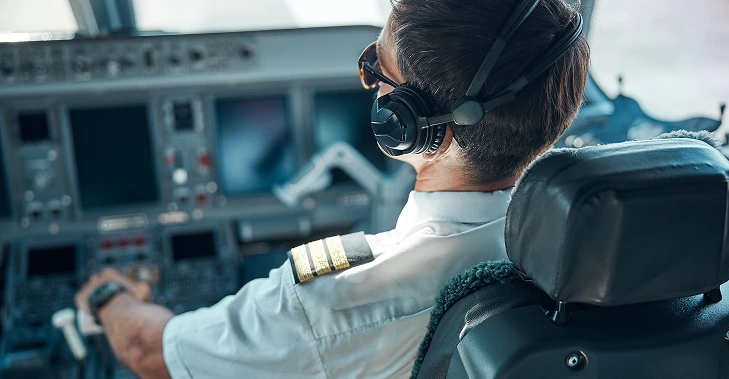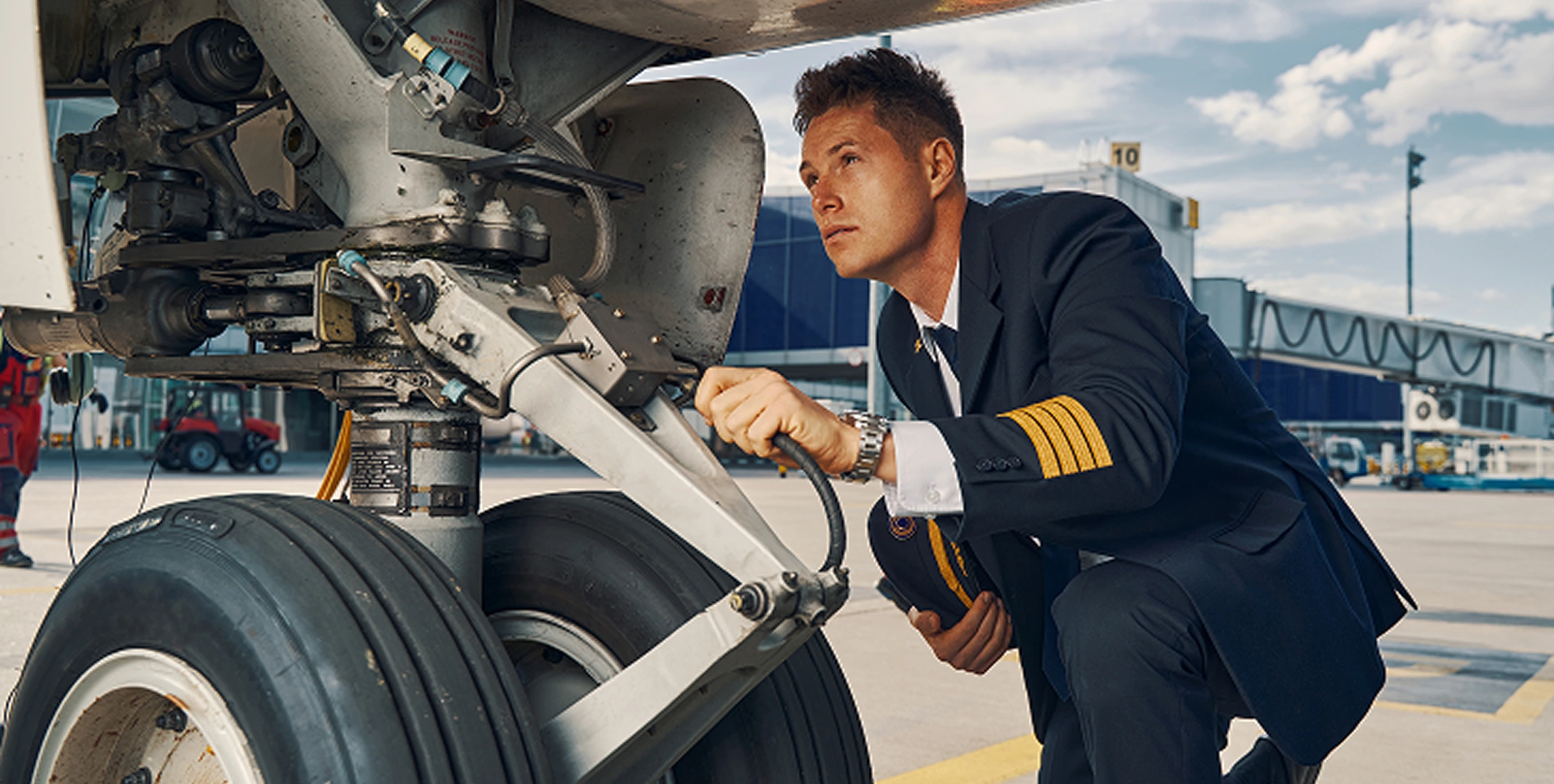Since its launch in the 1980s, the Airbus A320 has revolutionized commercial aviation with its innovative technology and efficient design. Today, it is not only one of the most widely used aircraft by airlines worldwide, but also the preferred model for pilot training—thanks to its versatility, advanced automation, and strong demand in the global job market.
In Colombia, this trend is reflected in top-tier training centers like Global Training Aviation, where the A320 plays a central role in preparing the next generation of aviators.
Since its first flight in 1987, the Airbus A320 has become one of the most popular and versatile commercial aircraft in the world. Known as the first airliner to feature fully digital fly-by-wire controls, the A320 marked a turning point in modern aviation. Its reliability, efficiency, and adaptability have made it indispensable for airlines in Colombia and around the globe, operating on both domestic and international routes.
Over time, the A320 has evolved into a successful family of aircraft. The A318 and A319 are shorter variants designed for regional routes and airports with runway limitations. The A320neo (New Engine Option) represents the eco-friendly evolution of the model, offering more efficient engines and extended range while reducing fuel consumption by up to 15%. Meanwhile, the A321 stands out as the longest version in the family, ideal for high-capacity routes. This versatility has ensured the A320’s continued dominance in the aviation market—including the pilot training sector in Colombia, where demand for A320 simulators and type ratings continues to grow.
The Airbus A320 stands out for its intelligent design and operational efficiency, making it one of the most popular aircraft for pilot training in Colombia.
Its cockpit is designed for a two-pilot flight crew and a cabin crew of four flight attendants, ensuring both safety and excellent onboard service—even on short- and medium-haul flights.
In terms of capacity, the A320 can carry up to 180 passengers in an all-economy layout, though its typical configuration includes 164 seats. For dual-class flights, the standard capacity is around 150 passengers, making it a versatile option for both regional and international routes.
When it comes to cargo, the A320 can accommodate up to 44 cubic meters or 7 LD3-45W containers, offering an excellent balance between payload and efficiency.
Its aerodynamic design is reflected in its dimensions: 37.6 meters in length, a wingspan of 35.8 meters, a height of 11.8 meters, and a wing area of 122.6 m².
All these features make the A320 an ideal aircraft for high-fidelity simulator training, such as the programs offered by Global Training Aviation in Colombia, where pilots can become familiar with every technical detail of the aircraft.

1. High Demand in the Job Market
The Airbus A320 is one of the most widely operated aircraft in the world and across Latin America, driving strong demand for type-rated pilots. In Colombia, airlines such as Avianca and Viva have incorporated multiple A320 units into their fleets, increasing the need for certified A320 pilots. Holding this certification not only enhances job prospects but also positions graduates in a highly competitive and well-paid segment of the aviation industry.
2. Technological Advancements
Beyond its popularity among airlines, the Airbus A320 has become a key tool in pilot training due to its advanced technological systems. Its fully digital cockpit and automated operational processes allow students to develop skills in complex environments, simulating real-world commercial flight scenarios. In Colombia, training centers like Global Training Aviation leverage this technology in their A320 flight simulators in Bogotá, which are equipped to replicate the aircraft’s behavior under various weather, operational, and emergency conditions. This tech-focused approach prepares future pilots not only to operate the A320 but also to transition smoothly to other modern, digitalized fleets—making A320 training a long-term investment for Colombian students aiming to stand out in a globalized market.
3. Cost-Effective for Training Centers
From the perspective of aviation academies, the A320 is a cost-effective and sustainable option. Its standardized design and the ability to train on variants like the A319 or A321 using the same base platform (thanks to Airbus’s common cockpit philosophy) help reduce operational costs. Additionally, certified simulators—such as those offered by GTA Colombia—enable intensive training without the need for actual flight hours, optimizing both resources and time.
4. Common Platform Advantage
One of the A320’s greatest advantages is its common platform, which allows pilots trained on this model to easily transition to other aircraft in the Airbus family, such as the A319 or A321. This expands job opportunities and shortens the learning curve. For training centers in Colombia like Global Training Aviation, this represents a key benefit, enabling them to offer a more flexible curriculum aligned with real-world industry needs.

Choosing to train on the Airbus A320 opens the door to a strong and globally relevant aviation career.
One of the main benefits is the high employability that comes with this type rating. With a large number of A320 aircraft operating in airlines across Colombia, Latin America, and the world, pilots trained on this model enjoy greater job placement opportunities—especially with carriers seeking crews familiar with modern, fuel-efficient fleets.
Another key advantage is the widespread availability of A320 simulators worldwide, including those in Colombia through GTA. These certified simulators are equipped with cutting-edge technology, allowing students to gain realistic hands-on experience without leaving the country. This represents significant savings in both cost and logistics for those who want to train close to home while meeting international standards.
Additionally, the A320’s reputation as a safe, modern, and reliable aircraft has made it a benchmark for leading airlines around the globe. Holding an A320 type rating adds prestige and credibility in the eyes of employers.
Training programs are also continuously updated to incorporate the latest technological advancements, safety regulations, and educational tools—ensuring that Colombian pilots are well-prepared to meet the evolving challenges of today’s aviation industry.
Training to become a pilot on the Airbus A320 is a strategic decision for those aiming to stand out in the competitive Colombian and international aviation markets. With high job demand, advanced technology, access to state-of-the-art simulators like those at Global Training Aviation in Colombia, and global recognition by leading airlines, the A320 offers not only top-tier training but also strong career prospects. Choosing this type rating means investing in a solid and global future in commercial aviation.
Not necessarily. Many training centers, such as GTA Colombia, offer the Airbus A320 type rating course for pilots who already hold a CPL (Commercial Pilot License) or ATPL (Airline Transport Pilot License) and have a solid foundation of flight experience. While previous experience flying complex aircraft like the A320 is not required, it is essential to have prior aviation training and a strong understanding of navigation, aircraft systems, and flight operations to make the most of the program.
The cost of obtaining an Airbus A320 type rating varies depending on the training center, country, and services included. On average, prices range between 15,000€ and 30,000€. This typically covers both theoretical and practical training, as well as access to certified simulators—such as those offered by GTA Colombia. While it is a significant investment, it can be quickly recovered thanks to the high employability and strong career prospects that come with being certified to fly one of the world’s most in-demand aircraft.
The duration of an Airbus A320 type rating course typically ranges from 4 to 6 weeks, depending on the program and the student’s availability. This period includes theoretical instruction, Full Flight Simulator (FFS) sessions, and hands-on practice with both normal and emergency procedures. At Global Training Aviation, the program is designed to be intensive yet accessible, ideal for aspiring copilots who want to enter the job market quickly and confidently.
The Airbus A320 is one of the most widely used aircraft by airlines around the world, making it an excellent choice for pilots in training. Major carriers such as Lufthansa, Iberia, easyJet, Air France, Vueling, Avianca, Volaris, LATAM, and many others operate fleets largely composed of A320 aircraft. This significantly increases employment opportunities for pilots who hold the corresponding type rating.
The Airbus A320 is widely regarded as one of the safest aircraft in commercial aviation. With its robust design and advanced fly-by-wire technology, it offers high standards of operational safety. Additionally, its global popularity ensures a well-established maintenance network and continuous system upgrades—further enhancing its reliability and in-flight efficiency.